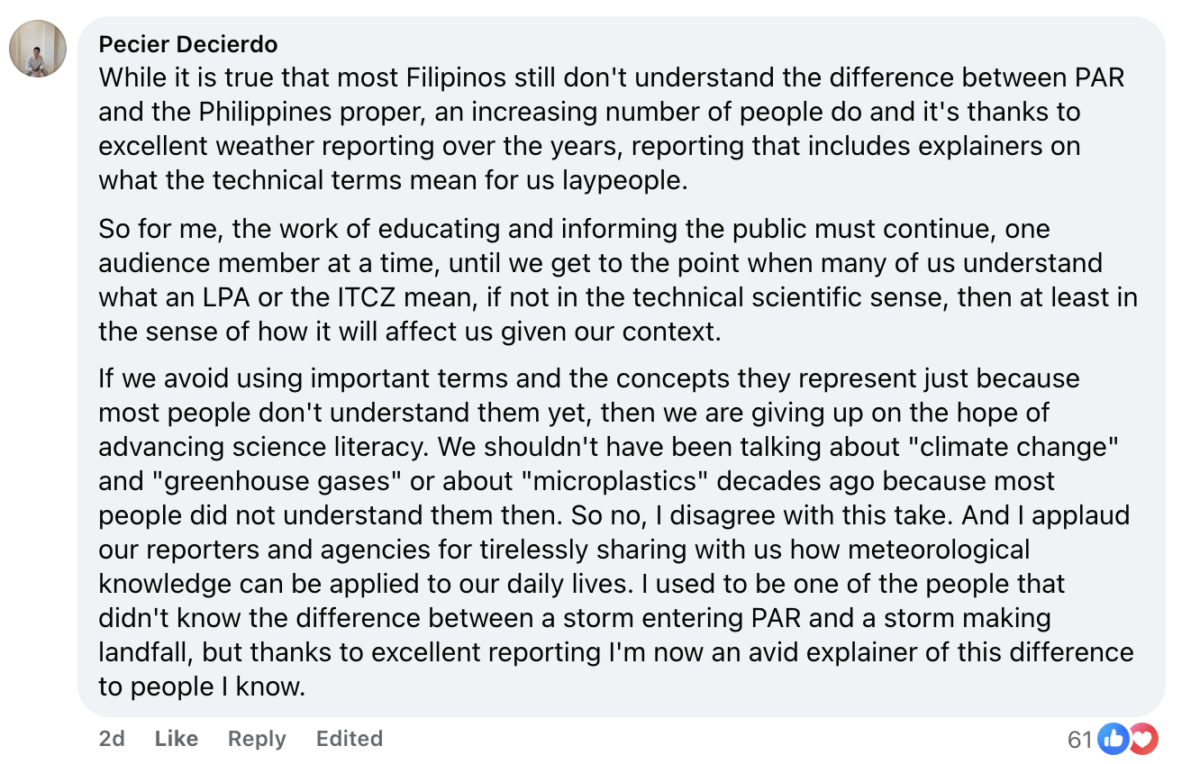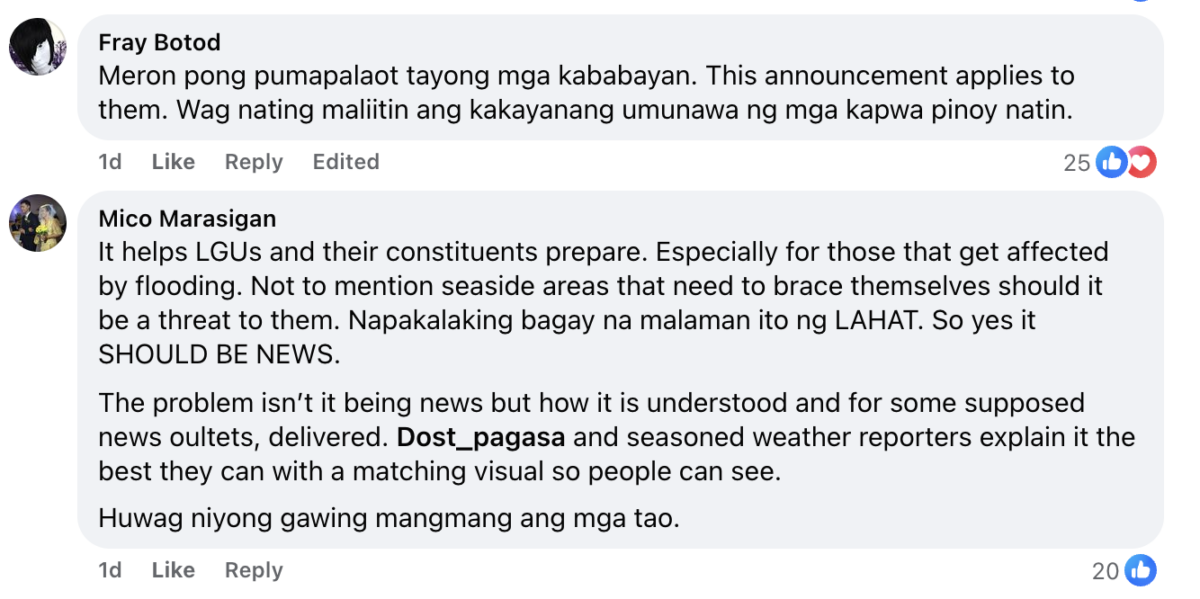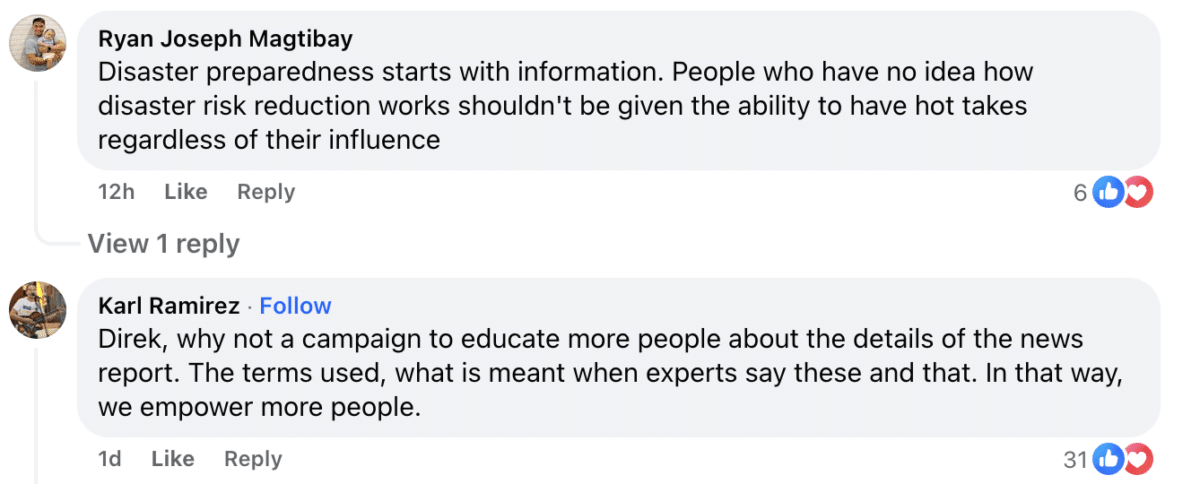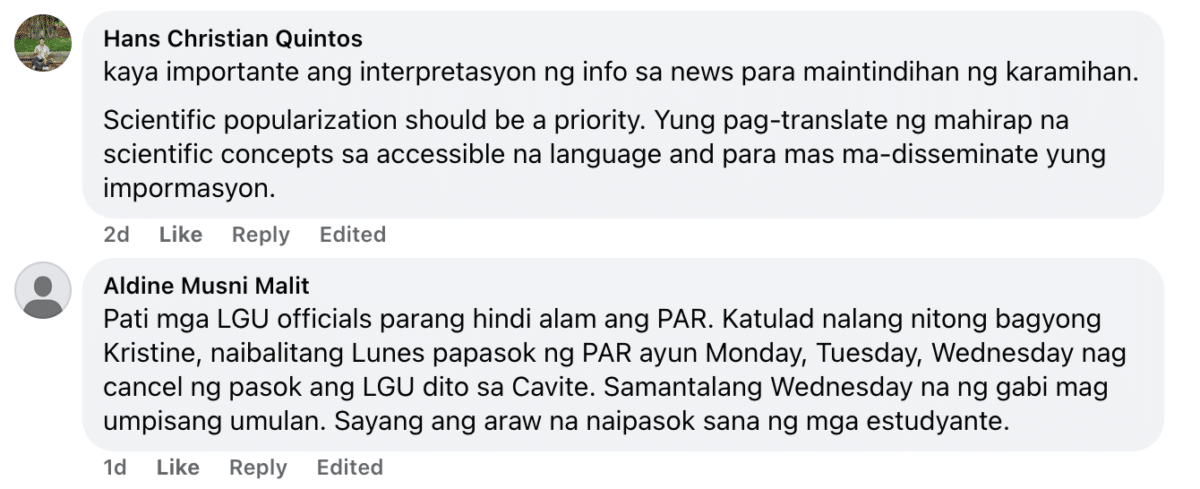Film director says typhoons entering PAR ‘shouldn’t be announced as news’

Jason Paul Laxamana. Image: Instagram/@jplaxamana
Updated 4:40 p.m.
Filmmaker Jason Paul Laxamana drew mixed reactions after he voiced his opinion on how news reports about typhoons entering the Philippine area of responsibility (PAR) only cause “confusion and panic to regular people.”
“Hot take: a typhoon entering the Philippine Area of Responsibility shouldn’t be announced as news, [because] it causes confusion/panic to regular people who assume that PAR = landfall. Pang-meteorologist lang dapat ang info na iyon (That information should only be used among meteorologists),” Laxamana argued, as per his Facebook page last Saturday, Oct. 26.

Image: Facebook/Jason Paul Laxamana
Laxamana issued his post on the heels of the devastating effects of tropical storm Kristine (international name: Trami) in the Bicol region and other parts of the country, and as tropical cyclone Leon (international name: Kong-Rey) developed into a super typhoon as it enters PAR.
In the comments section, several netizens pointed out the need to inform the public about the oncoming typhoon to ensure their safety prior to landfall. The writer-filmmaker responded that there is no need to use technical terms in typhoon reports.
Article continues after this advertisement“It’s enough to say it’s being monitored, along with its chance of making a landfall,” he replied.
Article continues after this advertisement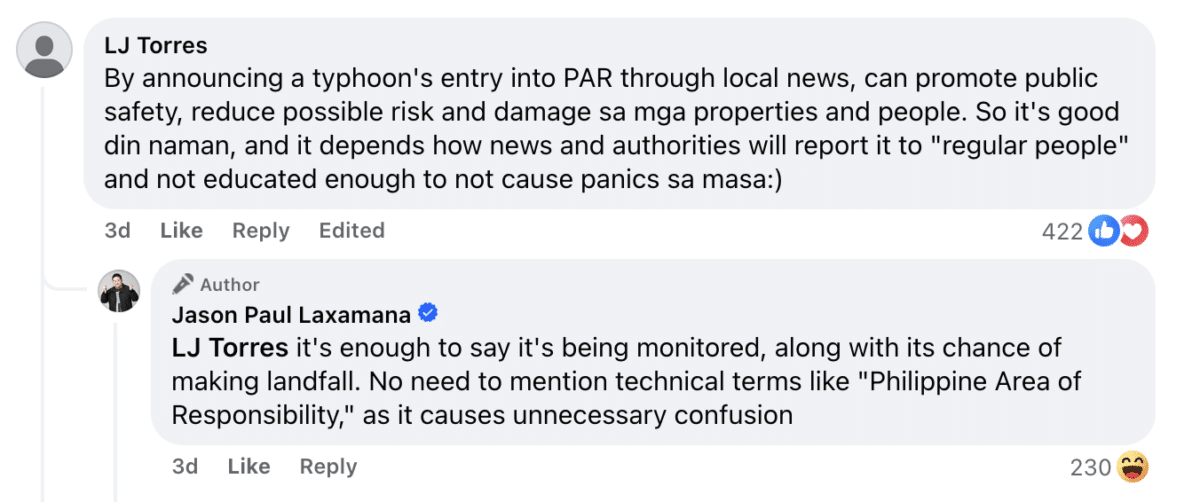
Image: Facebook/Jason Paul Laxamana
“PAR is a technical term which is meant for scientists, not the common tao,” he wrote in a separate comment.
“I guess fear-mongering boosts engagement kaya (that’s why) they do this,” he said in yet another comment, apparently referring to the media that reports on the Pagasa jargon.
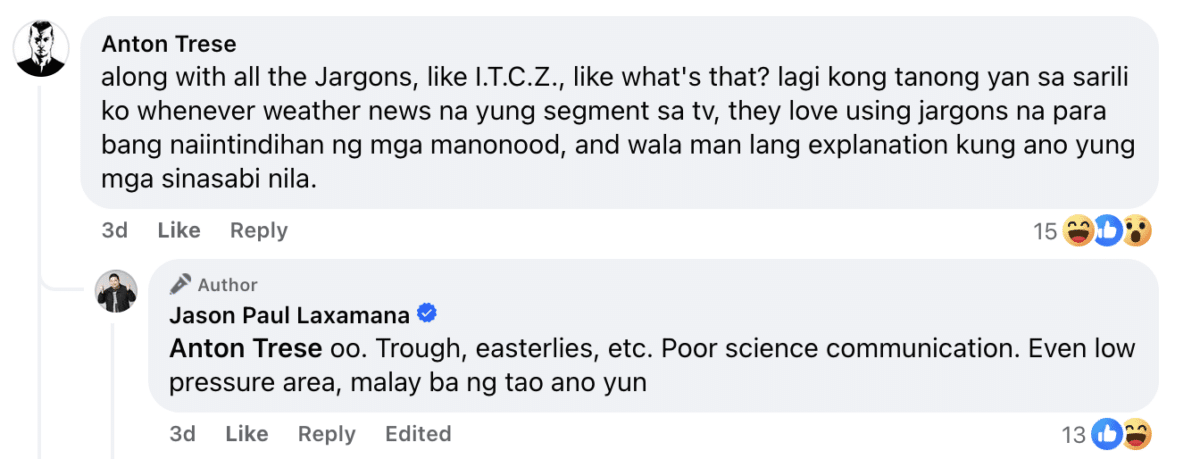
Image: Facebook/Jason Paul Laxamana
Another Facebook user then chimed in and stated that while there is a need for technical terms “to be communicated in layman’s terms for the general public,” typhoons entering PAR should still be announced.
Laxamana then agreed, “Yes, it’s a communication issue. Technical info is dumped onto the masses instead of digesting technical jargon for them to understand.”
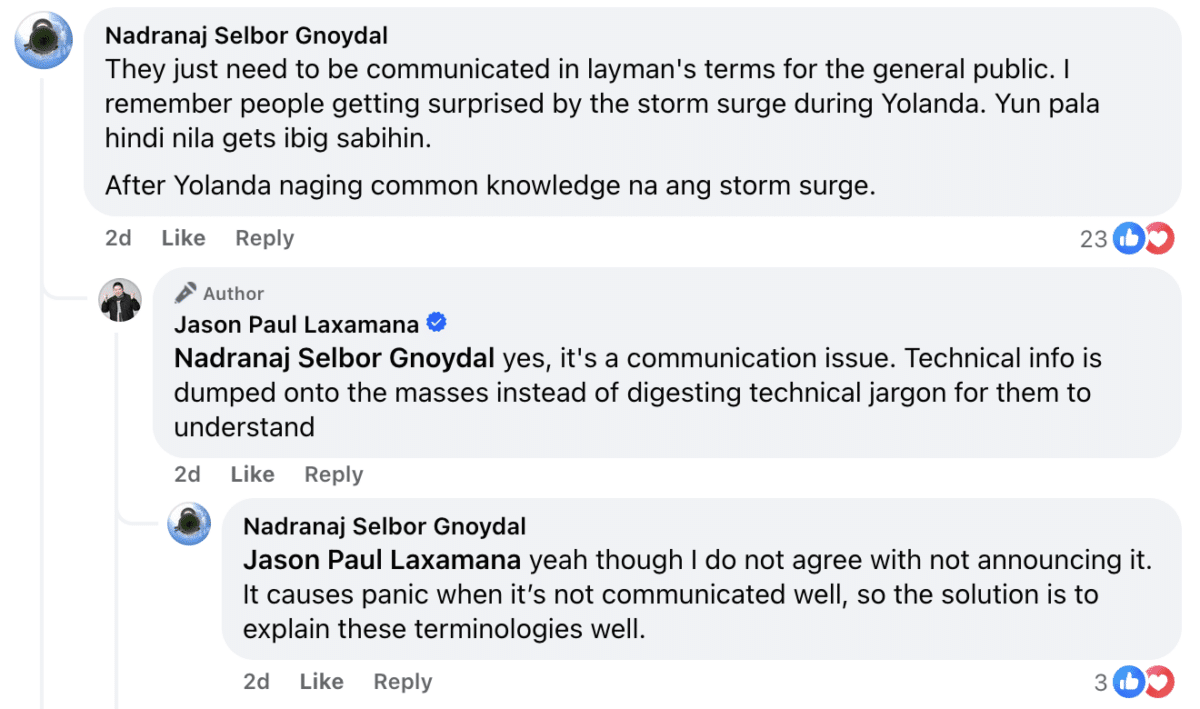
Image: Facebook/Jason Paul Laxamana
In a separate post, Laxamana also addressed remarks from netizens who stressed that terminologies such as PAR are being thought in schools.
“‘Ever since we were students, Philippine Area of Responsibility are already being taught in schools,’ sabi ng mga out-of-touch sa kaalaman ng common tao,” the director said. “Good (mass) communication is not about dumping technical info on people. It requires digesting of specialized info so they can make better and more informed decisions and responses.”
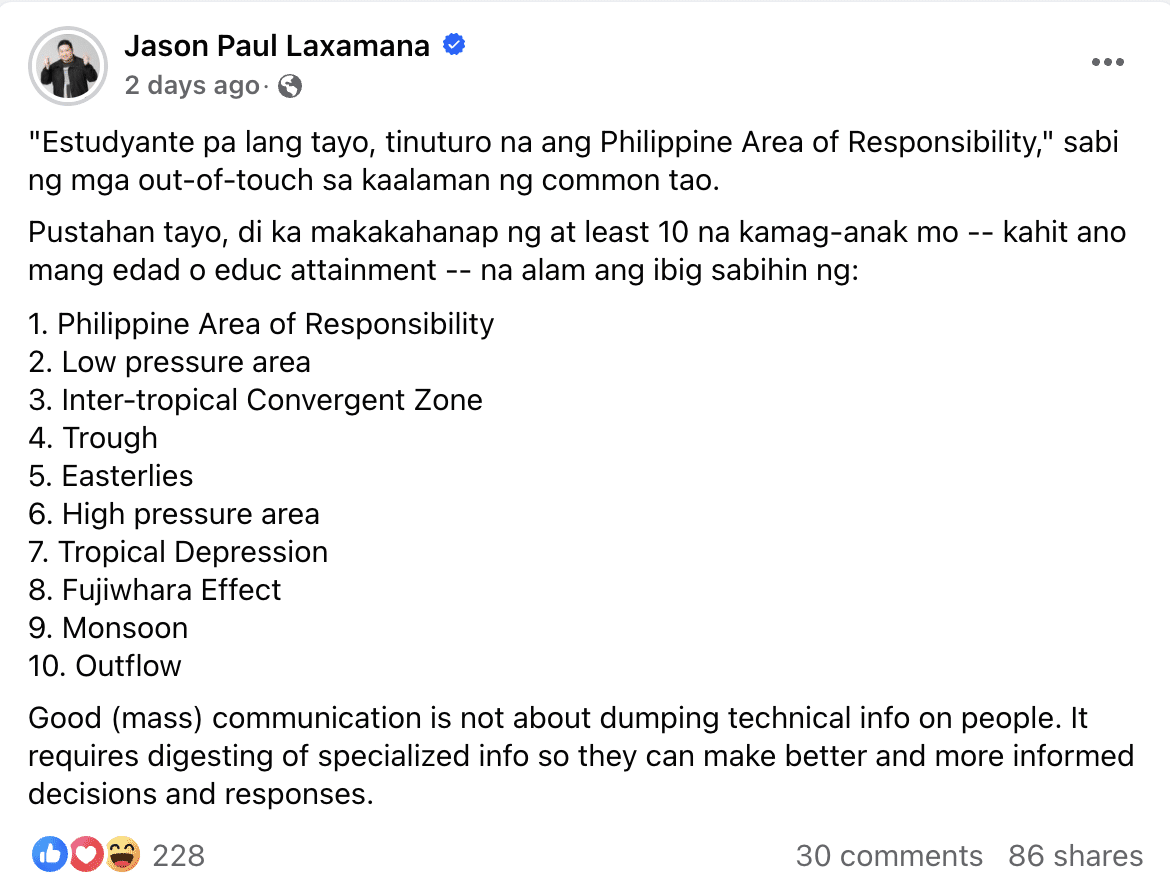
Image: Facebook/Jason Paul Laxamana
Further discussions on Laxamana’s take can be seen in the comments section of his posts, with some agreeing with the filmmaker and others underscoring that instead of limiting weather reports—as what Laxamana suggested—education should be promoted for the “confusion” to be addressed.

Images are screenshots from Jason Paul Laxamana’s Facebook.
Standing by his position
Laxamana later asserted that he is standing by his statement, saying that the “weather news that is relevant to the common tao [people] is landfall, typhoon strength, rains and floods.”
“It entering the Philippine area of responsibility—an imaginary zone covered by Philippine meteorologists—doesn’t mean anything yet. It only means binabantayan na ng weathermen (the weathermen are monitoring it),” he said.
“‘Di porke binabantayan ay may epektong direkta sa Pilipinas,” he further argued. (Just because it is being monitored doesn’t mean it already has direct effect on the Philippines.)
The film director then addressed those who would “prefer to be tensed over weather reports when it has no direct effect yet to the country.”
“…God bless sa inyo. Mag-sad react lang kayo nang mag-sad react every time may balita na ‘nakapasok na ng PAR,'” he wrote. (God bless you all. Just use the sad reaction every time [a typhoon] is reported to have entered PAR.)

Image: Facebook/INQUIRER.net

